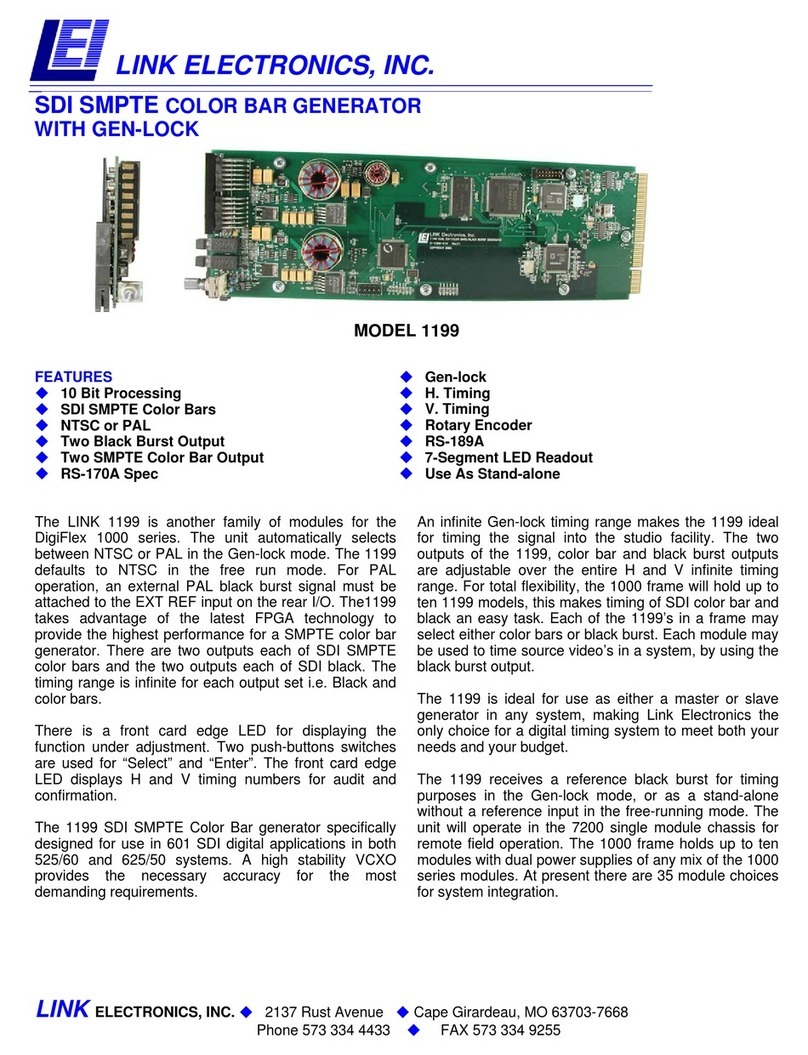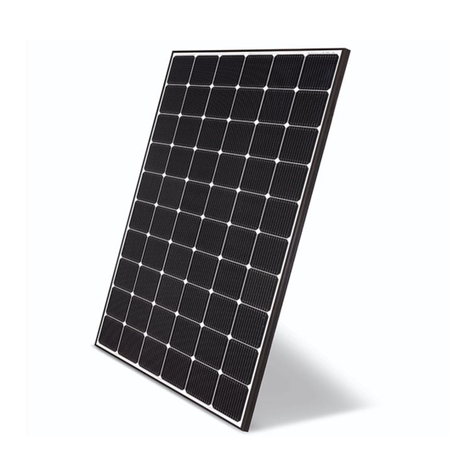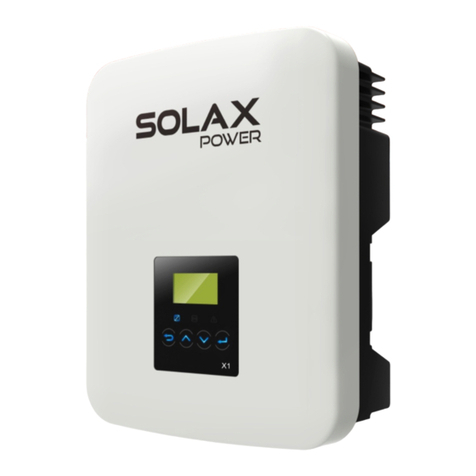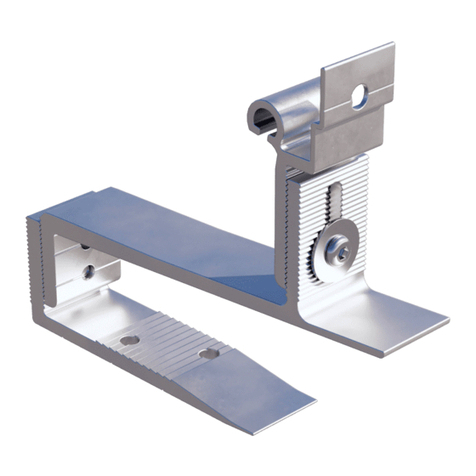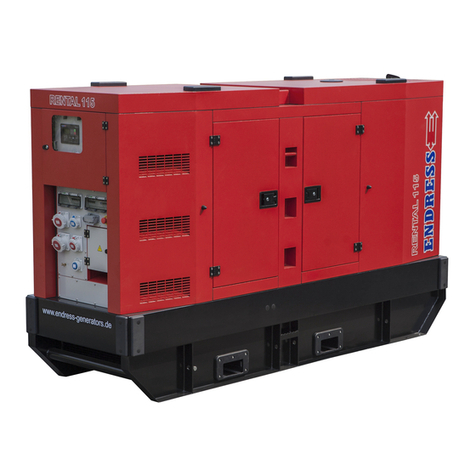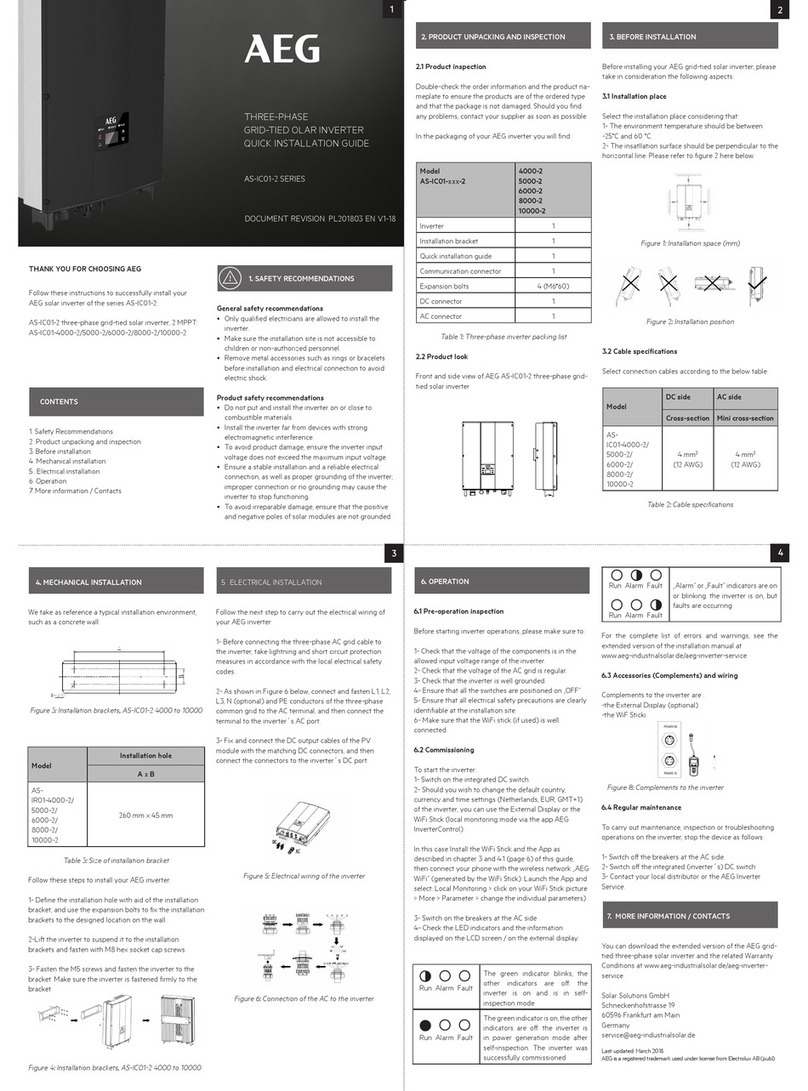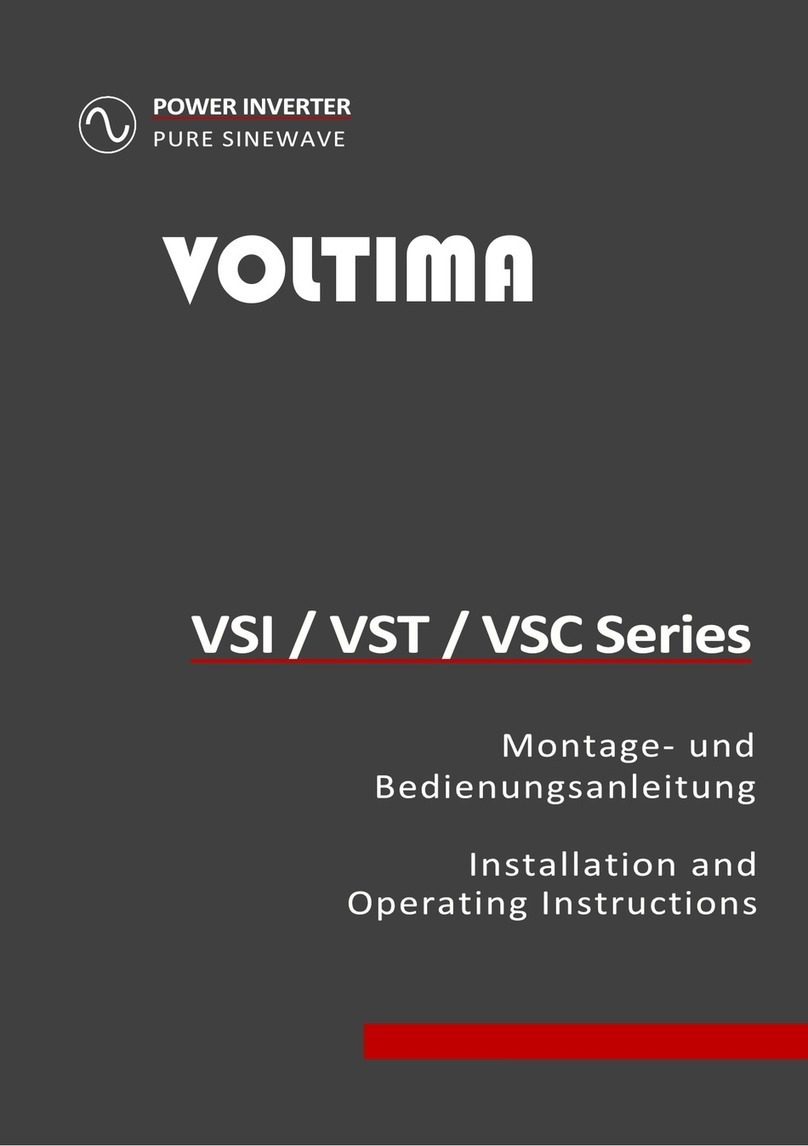OTC DP270C User manual

MANUAL NO:P30051
OWNER'S MANUAL
FOR
DIGITAL INVERTER
DP270C
INVERTER CONTROLLED WELDING POWER SOURCE
DO NOT DESTROY
IMPORTANT: Read and understand the entire contents of this
manual, with special emphasis on the safety material throughout
the manual, before installing, operating, or maintaining this
equipment. This equipment and this manual are for use only by
persons trained and experienced in the safety operation of welding
equipment. Do not allow untrained persons to install, operate or
maintain this equipment. Contact your distributor if you do not
fully understand this manual.
DAIHEN Corporation WELDING PRODUCTS DIVISION
July 8, 2008
Upon contact, advise MODEL and MANUAL NO.
12-2-095-1
MODEL: DP-270C P30051
MAG

No. P30051
―1―
TABLE OF CONTENTS
1. SAFETY INFORMATION…………………………………………………………… 2
2. ARC WELDING SAFETY PRECAUTIONS……………………………………… 2
3. GENERAL NOTICE OF OPERATION…………………………………………….. 8
4. STANDARD COMPOSITION AND ACCESSORIES…………………………… 9
5. FUNCTION OF EQUIPMENT……………………………………………………… 11
6. NECESSARY POWER SOURCE EQUIPMENT………………………………… 13
7. TRANSPORT AND INSTALLATION……………………………………………… 14
8. CONNECTION PROCEDURE AND GROUND FOR SAFETY USE………….. 16
9. WELDING PREPARATION………………………………………………………… 19
10. OPERATION…………………………………………………………………………. 32
11. APPLIED FUNCTION……………………………………………………………….. 60
12. MAINTENANCE AND TROUBLESHOOTING…………………………………… 67
13. PARTS LIST…………………………………………………………………………. 76
14. SPECIFICATIONS…………………………………………………………………... 80
15. SERVICE AND SUPPORT………………………………………………………… 84

No. P30051
―2―
1. SAFETY INFORMATION
The following safety alert symbols and signal words are used throughout this manual to
identify various hazards and special instructions.
WARNING WARNING gives information regarding possible personal injury
or loss of life.
CAUTION CAUTION refers to minor personal injury or possible equipment
damage.
2. ARC WELDING SAFETY PRECAUTIONS
WARNING
ARC WELDING can be hazardous.
1. PROTECT YOURSELF AND OTHERS FROM POSSIBLE SERIOUS INJURY OR DEATH.
Be sure to:
Keep children away.
Keep pacemaker wearers away until consulting a doctor.
2. Read and understand the summarized safety information given below and the original
principal information that will be found in the PRINCIPAL SAFETY STANDARDS.
3. Have only trained and experienced persons perform installation, operation, and
maintenance of this equipment.
4. Use only well-maintained equipment. Repair or replace damaged parts at once.
ARC WELDING is safe when precautions are taken.

No. P30051
―3―
2. ARC WELDING SAFETY PRECAUTIONS (continued)
ELECTRIC SHOCK can kill.
Touching live electrical parts can cause fatal shocks or severe burns. The electrode and work
circuits are electrically live whenever the output is on. The power line and internal circuits of
this equipment are also live when the line disconnect switch is on. When arc welding all metal
components in the torch and work circuits are electrically live.
1. Do not touch live electrical parts.
2. Wear dry insulating gloves and other body protection that are free of holes.
3. Insulate yourself from work and ground using dry insulating mats or covers.
4. Be sure to disconnect the line disconnect switch before installing, changing torch parts
or maintaining this equipment.
5. Properly install and ground this equipment according to its Owner’s Manual and national,
state, and local codes.
6. Keep all panels and covers of this equipment securely in place.
7. Do not use worn, damaged, undersized, or poorly spliced cables.
8. Do not touch electrodes or any metal object if POWER switch is ON.
9. Do not wrap cables around your body.
10. Turn off POWER switch when not in use.
ARC RAYS can burn eyes and skin: FLYING SPARKS AND HOT METAL can
cause injury. NOISE can damage hearing.
Arc rays from the welding process produce intense heat and strong ultraviolet rays that can
burn eyes and skin.
Noise from some arc welding can damage hearing.
1. Wear face shield with a proper shade of filter (See ANSI Z 49.1 listed in PRINCIPAL
SAFETY STANDARDS) to protect your face and eyes when welding or watching a welder
work.
2. Wear approved face shields or safety goggles. Side shields recommended.
3. Use protective screens or barriers to protect others from flash and glare: warn others not
to look at the arc.
4. Wear protective clothing made from durable, flame-resistant material (wool and leather)
and foot protection.
5. Use approved earplugs or earmuffs if noise level is high.
Chipping and grinding can cause flying metal. As welds cool, they can throw off slag.
6. Wear proper body protection to protect skin.

No. P30051
―4―
2. ARC WELDING SAFETY PRECAUTIONS (continued)
WELDING can cause fire and explosion.
Sparks and spatter fly off from the welding arc. The flying sparks, hot metal, spatter, hot base
metal and hot equipment can cause fire and explosion. Accidental contact of electrode or
welding wire to metal object can cause sparks, overheating, or fire.
1. Protect yourself and others from flying sparks and hot metals.
2. Do not weld where flying sparks can strike flammable material.
3. Remove all flammables within 10m (33ft) of the welding arc. If this is not possible, tightly,
cover them with approved covers.
4. Be alert that welding sparks and hot metals from welding can easily pass through cracks
and openings into adjacent areas.
5. Watch for fire, and keep a fire extinguisher nearby.
6. Be aware that welding on a ceiling, floor, bulkhead, or partition can ignite a hidden fire.
7. Do not weld on closed containers such as tanks or drums.
8. Connect power cable for base metal as close to the welding area as possible to prevent the
welding current from traveling along unknown paths and causing electric shock and fire
hazards.
9. Remove stick electrode from holder or cut off welding wire at contact tip when not in use.
10. Do not use the welding power source for anything other than arc welding.
11. Wear oil-free protective garments such as leather gloves, a heavy shirt, cuffless trousers,
boots, and a cap.
12. A loose cable connection can cause sparks and excessive heating.
13. Tighten all cable connections.
14. When there is an electrical connection between a work piece and the frame of wire feeder or
the wire reel stand, arc may be generated and cause damage by a fire if the wire contacts
the frame or the work piece.
FUMES AND GASES can be hazardous to your health.
Arc welding produce fumes and gases. Breathing these fumes and gases can be hazardous to
your health.
1. Keep your head out of the fumes. Do not breathe the fumes.
2. Ventilate the area and/or use exhaust at the arc to remove welding fumes and gases.
3. If ventilation is poor, use an approved air-supplied respirator.
4. Read the Material Safety Data Sheets (MSDS) and the manufacturer’s instructions on
metals, consumables, coatings, and cleaners.
5. Do not weld or cut in locations near degreasing, cleaning, or spraying operations.
The heat and arc rays can react with vapors to form highly toxic and irritating gases.
6. Work in a confined space only if it is well ventilated, or while wearing an air-supplied
respirator. Shielding gases used for welding can displace air causing injury or death.
Be sure the breathing air is safe.

No. P30051
―5―
2. ARC WELDING SAFETY PRECAUTIONS (continued)
CYLINDER can explode if damaged.
A shielding gas cylinder contains high-pressure gas. If damaged, a cylinder can explode.
Since gas cylinders are normally part of the welding process, be sure to handle them carefully.
1. Use only correct shielding gas cylinders, gas regulator, hoses, and fittings designed for the
specific application; maintain them in good condition.
2. Protect compressed gas cylinders from excessive heat, mechanical shock, and arcs.
3. Keep the cylinder upright and securely chained to a stationary support or a rack to prevent
falling or tipping.
4. Keep cylinders away from any welding or other electrical circuit.
5. Never touch cylinder with welding electrode.
6. Read and follow instructions on compressed gas cylinders, associated equipment, and the
CGA publication P-1 listed in PRINCIPAL SAFETY STANDARDS.
7. Turn face away from the valve outlet when opening cylinder valve.
8. Keep protective cap in place over valve except when a gas cylinder is in use or connected
for use.
9. Do not disassemble or repair the gas regulator except if you are authorized by the
manufacturer.
WARNING
Be sure to observe the followings for preventing physical injuries, a fire and electric shock.
Handling of plastic parts
Front panel and the likes on this power source are made of polycarbonate.
Make sure to observe the following notice.
1. Do not apply external force and a shock to front panel and the likes. Otherwise it
maybe broken and in trouble.
2. Polycarbonate can endure wiping off with water and alcohol in general but using at a
sticking place with an organic solvent, chemicals, cutting oil and atmosphere such as
composition oil, it gives bad influence to polycarbonate and it causes a crack
(breaking) and a strength down.
If abnormality was discovered such as crack on the front panel, stop operating
immediately and ask to repair and change.
Rotating parts may cause injuries. Be sure to observe the following.
If hands, fingers, hair or clothes are put near the fan’s rotating parts or wire feeder’s feed roll,
injuries may occur.
1. Do not use this equipment if the case and the cover are removed.
2. When the case is removed for maintenance/inspection and repair, certified or experienced
operators must perform the work. Erect a fence, etc. around this equipment to keep others
away from it.
3. Do not put hands, fingers, hair or clothes near the rotating fans or wire feed roll.

No. P30051
―6―
2. ARC WELDING SAFETY PRECAUTIONS (continued)
ARC WELDING work areas are potentially hazardous.
FALLING or MOVING machines can cause serious injury.
1. When hanging the welding power source by a crane, do not use the carrying handle.
2. Put the welding power source and wire feeder solidly on a flat surface.
3. Do not pull the welding power source across a floor laid with cables and hoses.
4. Do not put wire feeder on the welding power source.
5. Do not put the welding power source or wire feeder where they will pit or fall.
WELDING WIRE can cause puncture wounds.
1. Do not press the gun trigger until instructed to do so.
2. Do not point the gun toward any part of the body, other people, or any metal when
threading welding wire.
To prevent electromagnetic troubles, read the following. Also, if electromagnetic
troubles occur, check the following again.
Before installing arc welding equipment the user shall make an assessment of potential
electromagnetic problems in the surrounding area. The following shall be taken into account:
1. other supply cables, control cables, signalling and telephone cables, above, below and
adjacent to the arc welding equipment;
2. radio and television transmitters and receivers;
3. computer and other control equipment;
4. safety critical equipment, for example guarding of industrial equipment;
5. the health of the people around, for example the use of pacemakers and hearing aids;
6. equipment used for calibration or measurement;
7. The user shall ensure that other equipment being used in the environment is compatible;
8. the time of day that welding or other activities are to be carried out;
Methods of reducing EMC:
Public supply system
Add a noise filter to the input cables.
Maintenance of the arc welding equipment
Close and fix all doors and covers of the welding machine.
Welding cables
Do not use an unnecessarily long cable.
Place a base metal cable and a torch side cable as closely as possible.
Equipotential bonding
Bonding of all metallic objects in the surrounding area should be considered.
Earthing of the workpiece
The connection of the workpiece to earth should be made by a direct connection to the
workpiece, but in some countries where direct connection is not permitted, the bonding
should be achieved by suitable capacitance, selected according to national regulations.
Screening and shielding
It is selective screening and shielding of other cables and equipment in the surrounding area.
HF

No. P30051
―7―
PRINCIPAL SAFETY STANDARDS
Arc welding equipment – Installation and use, Technical Specification
IEC 62081, from International Electro technical Commission
Arc welding equipment Part 1: Welding power sources IEC 60974-1, from International Electro
technical Commission
Arc welding equipment Part 10: Electromagnetic compatibility (EMC) requirements IEC 60974-10,
from International Electro technical Commission
Safety in Welding and Cutting, ANSI Standard Z49.1, from American Welding Society.
Safety and Health Standards, OSHA 29 CFR 1910, from Superintendent of Documents, U.S.
Government Printing Office.
Recommended Practices for Plasma Arc Cutting, American Welding Society Standard AWS C5.2,
from American Welding Society.
Recommended Safe Practices for the Preparation for Welding and Cutting of Containers That Have
Held Hazardous Substances, American Welding Society Standard AWS F4.1, from American
Welding Society.
National Electrical Code, NFPA Standard 70, from National Fire Protection Association.
Safe Handling of Compressed Gases in Cylinders, CGA Pamphlet P-1, from Compressed Gas
Association.
Code for Safety in Welding and Cutting, CSA Standard W117.2, from Canadian Standards
Association, Standards Sales.
Safe Practices For Occupation And Educational Eye And Face Protection, ANSI Standard Z87.1,
from American National Standards Institute.
Cutting And Welding Processes, NFPA Standard 51B, from National Fire Protection Association.
NOTE: The codes listed above may be improved or eliminated. Always refer to the updated codes.
M080709

No. P30051
―8―
3. GENERAL NOTICE OF OPERATION
3.1Rated Duty Cycle
CAUTION
٨Use this welding power source at or under the rated duty cycle. Exceeding the rated duty
cycle limitation may result in damage to the welding machine.
•The rated duty cycle of the welding power source is the following:
270A 40㧑
•The duty cycle of 40% means the machine
must be rested for 4 minutes after 6 minutes of
continuous welding at the rated current.
Operation cycle of 40% duty cycle
•Failure to observe duty cycle limitations may
cause the temperature inside the welding
machine to exceed tolerance levels. This may
contribute to premature welding machine
failure or product damage.
•The figure shown right indicates the relation between welding current and duty cycle.
Use the welding machine within its usable range, based on the appropriate duty cycle for
the welding current.
•The duty cycle of the welding power source is also limited by the duty cycles of
accessories combined with it, such as welding torches. Use the welding machine within
the lowest rated duty cycle of the accessories.
4 min. 6 min.
10 min.
ON OFF
Dut
y
c
y
cle
(
%
)
Welding current (A)
(170A or less)

No. P30051
―9―
4. STANDARD COMPOSITION AND ACCESSORIES
4.1 Standard Composition
•Preparation of the standard parts except the welding power source is required to use the
welding power source.
* Refer to Section 11.4 “Optional Accessories”.
4.2 Wire feeding unit
•The following parts are set. Refer to the optional parts of Section 13 “PART LIST” for the part
except these.
Description Part number Q’ty Remarks
Pressure roll K5439C00 2 for steel
Gear U5185P00 2 for steel
Feed roll (0.9-1.0/1.2) K5439B12 2 for steel, set in 㱢1.2 side
Center guide U5185B05 1 for steel
Pilot U5185J06 1 for steel
Outlet guide U5260J02 1 for steel
400V㨮3Ǿ
Input cables
Grounding cable
Gas hose *
Gas regulator
Analog remote control *
Welding torch
Power cable for base metal *
WeldingPowersource
Shield gas

No. P30051
―10―
4. STANDARD COMPOSITION AND ACCESSORIES (continued)
4.3 Accessory
Make sure you have the items below before you start using the welding power source.
•Accessory of welding power source
Description Specification Q’ty Part number Remarks
Dust filter P30051J05 1 㧙For the fan on the rear side of
welding power source
4.4 Preparation of consumables for welding
(1) Shield Gas
Use a suitable gas for welding method.
٨Carbon dioxide gas (CO2gas)
For welding (purity: 99.9% or more, moisture content: 0.002% or less)
٨MAG gas
80% argon (Ar) + 20% carbon dioxide gas (CO2gas)
٨MIG gas for mild steel
90% argon (Ar) + 10% carbon dioxide gas (CO2gas)
٨MIG gas for stainless steel
97.5% argon (Ar) + 2.5% carbon dioxide gas (CO2gas)
98% argon (Ar) + 2% oxygen (O2)
100% argon (Ar)
٨MIG gas for aluminum
100% argon (Ar)
(2) Welding wire
٨Use the welding wire which fitted a purpose.
(3) STICK Welding
٨Use the proper stick welding electrode for purpose of welding position, shape of joint, etc.
٨Use the electrode holder electrically insulated.

No. P30051
―11―
5. FUNCTION OF EQUIPMENT
5.1 Welding Power Source(Front side , back side)
Carrying handle
Grommet with film
(For pulling out external connecting cables)
Input cable
Gas Inlet
(9/16-18UNF)
Power switch
Rubber feet
Main power lamp
Socket for analog
remote control
Output terminal(+)
(For welding torch)
Output terminal(+)
(For welding holder)
Output terminal(-)

No. P30051
―12―
5. FUNCTION OF EQUIPMENT (continued)
5.2 Welding Power Source (Left side)
Wire feeding unit
Wire reel shaft

No. P30051
―13―
6. NECESSARY POWER SOURCE EQUIPMENT
6.1 Welding Power Source Equipment (for commercial use)
WARNING
٨When the welding machine is used in a humid environment such as a construction site, on a
steel plate, or on a steel structure, install a leakage breaker.
CAUTION
٨Be sure to install a switch with fuse or a circuit breaker (for motor) to the input sides of each
welding machine.
Capacity of Necessary Power Source Utility
MODEL DIGITAL INVERTER DP-270C
Power supply voltage 400V, Three phase
Tolerance range of fluctuation
of power supply voltage 400V±15%
Installed capacity 13.6kVA or more
Capacity of switch/circuit
breaker 50A
6.2 Precautions for Use of the Engine Generator
CAUTION
٨Use the auxiliary power of an engine welder with an improved voltage waveform. Some
engine welders have poor electricity, which may cause product damage. Contact an engine
welder manufacturer for improvement of voltage waveform.
To prevent the engine generator or auxiliary power from being damaged, follow the instructions
below.
•Set the output voltage of the engine generator to the voltage range between from 400 to 420V at
no-load welding operation. Setting to extremely high output voltage may result in product damage.
•Use an engine generator with a damper winding of which capacity is more than twice as much as
the rated input of the welding machine. Generally, the recovery time of the engine generator’s
voltage for load change is slower than that of the commercial input power source, and if the engine
generator does not have sufficient capacity, sudden current change such as arc start will occur.
This may result in an abnormal decrease in output current or arc loss. Ask an engine generator
manufacturer for a damper winding.
•Do not combine more than two welding machines with a single engine generator. The effect of
each welding machine may cause easy loss of arc.

No. P30051
―14―
7. TRANSPORT AND INSTALLATION
7.1 Transport
WARNING
Follow the instructions below to avoid trouble and product damage when carrying the welding
machine.
٨ Do not touch the live electrical parts inside or outside the welding machine.
٨ Be sure to disconnect the line disconnect switch when carrying the welding
machine.
٨When carrying the welding power source by a crane, do not use the handle and
hang the welding power source with the eyebolt surely.
٨Do not hang welding power source without eyebolt by a crane.
7.2 Installation
WARNING
When installing the welding machine, follow the instructions below to avoid a fire caused by
welding or physical injury from gas fumes.
٨Do not place the welding machine near combustible materials or flammable
gas.
٨Remove combustible materials to prevent dross coming into contact with
combustible objects. If that not possible, cover them with noncombustible
covers.
٨To avoid gas poisoning and danger of suffocation, wear a gas mask or
adequately ventilate when the welding machine is used in the place regulated
by a local law.
٨To prevent injury or poisoning caused by fume, wear a gas mask or weld at a
partial exhaust facility approved by the local regulation.
٨Adequately ventilate or wear a gas mask when using the welding machine in a
tank, boiler, or the hold of a ship. Heavier gases such as carbon dioxide or
argon gases tend to collect there.
٨When using the welding machine at a narrow space, comply with a trained
supervisor’s directions. And be sure to wear a gas mask.
٨Do not operate the welding machine near the place where degreasing,
cleansing, or spraying is performed. Otherwise, poisonous gas may be
generated.
٨Be sure to wear a gas mask or adequately ventilate when welding a coating
steel plate. (Poisonous gas and fume may be generated.)

No. P30051
―15―
7. TRANSPORT AND INSTALLATION (continued)
CAUTION
To prevent electromagnetic troubles, read the following. Also, if electromagnetic
troubles occur, check the following again.
Since large current abruptly flows inside the welding machine during welding, other machines
near the welding power source may be troubled due to electromagnetic noise
٨Do not ground the welding power source commonly with other machines.
٨Close and fix all doors and covers of the welding machine.
٨Do not use an unnecessarily long cable.
٨Place a base metal cable and a torch side cable as closely as possible.
In the event of electromagnetic trouble, follow the instructions below.
٨Change the installation place of the welding machine.
٨Keep the machines which may be affected away as far from the welding machine, cables and
welding site as possible.
٨Add a noise filter to the input cables.
٨Mount an input cable in the grounded metallic conduit.
٨Shield the whole welding places from electromagnetic trouble. If electromagnetic troubles are
still not solved after following the above instructions, consult your nearest DAIHEN dealer.
CAUTION
Follow the instructions below when selecting an installation place of the welding power source.
٨Do not install the welding power source in the place subject to direct sunlight and rain.
٨Place the welding machine on a strong and stable surface.
٨Install the welding machine in the place where the ambient temperature is between -10 ˚C and
+40 ˚C (+14 ˚F and +104 ˚F).
٨Do not install the welding machine in the place where metal material such as spatter enters the
welding power source.
٨Keep an installation distance of 30 cm between the welding power source and the wall or other
welding power.
٨Install a wind shield to protect arc from wind.
٨Fix the gas cylinder to the stand only for gas cylinder.
HF

No. P30051
―16―
8.CONNECTION PROCEDURE AND GROUND FOR SAFETY USE
WARNING
Follow the instructions below to avoid electric shock.
∗Do not touch the live electrical parts, as this will result in fatal shock and severe burn.
٨Do not touch the live electrical parts of the welding machine.
٨Have a qualified electric engineer ground the case of the welding power source and the base
metal or jig electrically connected, following a local low.
٨With the line disconnect switch inside the switch box all turned off, ground and connect the
welding machine.
٨Do not use a cable with lack of capacity or a seriously damaged cable.
٨Tighten and insulate the connections of cables.
٨Securely attach the cover of the welding machine after connection of the cables.
8.1 Connecting of the Welding Power Source
8.1.1 CO2/MAG/MIG welding
8.1.2 Stick welding
Gas hose Gas regulator
Analog remote control
Welding torch Power cable for base metal
Base metal
WeldingPowersource
Power cable
(38mm2or more)
Base metal
Holder
Power cable for base metal
(Optionally available)
Shield gas
Analog remote control
(Optionally available)
WeldingPowersource

No. P30051
―17―
8.CONNECTION PROCEDURE AND GROUND FOR SAFETY USE
8.1.3 TIG welding
8.2 Connecting of the Gas Hose
WARNING
٨There is a danger of suffocation caused by lack of oxygen when shield gas is
left flowing in a closed place. Be sure to turn off the shield gas at the main
when the welding power source is not in use.
CAUTION
٨Be sure to connect the gas hose after fixing to the stand, as physical injuries may result
from the gas cylinder toppling over.
٨Attach a proper gas flow regulator to a gas cylinder. Failure to do so may result in physical
injuries. The gas flow regulator for high pressure gas must be used.
1. Securely attach the gas hose to the gas inlet located on the rear side of the Welding power source
with a monkey wrench, etc.
2. Fix the nut for attaching the gas cylinder to the gas cylinder with a monkey wrench, etc.
3. Securely attach the gas hose to the gas outlet with a monkey wrench, etc.
Gascylinde
r
Gasoutlet
Ԙ
ԙ
Ԛ
Pressure gauge
WeldingPowersource *
* In the case of TIG welding,
connect the gas hose to a
welding torch.
Nutforattachinggascylinder
Gas regulator
Gas hose
Gas regulator
Analog remote control
Welding torch
Power cable for base metal Base metal
WeldingPowersource
(Optionally available)
Shield gas

No. P30051
―18―
8.CONNECTION PROCEDURE AND GROUND FOR SAFETY USE (continued)
8.3 Connecting of the input cable
WARNING
Follow the instructions below to avoid electric shock.
∗Touching the live electrical parts may result in a fatal electric shock and severe burn.
٨Do not touch the live electrical parts of the welding machine.
٨Have a qualified electric engineer ground the case of the welding power source and the base
metal or jig electrically connected in accordance with a local law.
٨With the line disconnect switch in the switch box all touched off, ground and connect the
welding machine.
CAUTION
٨Be sure to install a switch with fuse or a circuit breaker (for motor) to the input sides of each
welding machine.
CAUTION
Be sure to ground the case of the welding power source.
Use a grounding cable 4mm2or more in thickness.
٨If the welding power source which is not grounded is used, voltage will be generated in the
case through the capacitor between the welding power source input circuit and the case or
floating capacity (electrostatic capacity naturally generated between the input conductor and
the case metal). If you touch the case or the base metal, you may suffer from electric shock.
Be sure to ground the case of the welding power source.
Green/Yellow cable
For Grounding cable
Base metal
Input cables
Surely connect the input and grounding cables
AWG 12 (4mm2) to the circuit breaker.
Mount a switch with fuse or a circuit breaker
on each welding machine.

No. P30051
―19―
9.WELDING PREPERATION
9.1 Preparing the Protective Equipment
To protect you from gas generated from welding, fumes, and lack of oxygen,
wear protective equipment.
٨To avoid gas poisoning and danger of suffocation, wear a gas mask or adequately ventilate
when the welding machine is used in a place regulated by a local law.
٨To prevent injury or poisoning caused by fume, wear a gas mask or weld at a partial exhaust
facility approved by local regulations.
٨Adequately ventilate or wear a gas mask when using the welding machine in a tank, boiler or
the hold of a ship. Heavier gases such as carbon dioxide or argon gases tend to collect.
٨When using the welding machine at a narrow space, comply with a trained supervisor’s
directions. Make sure to wear a gas mask.
٨Do not operate the welding machine near the places where degreasing, cleansing, or
spraying is performed. Otherwise, poisonous gas may be generated.
٨Be sure to wear a gas mask or adequately ventilate when welding a coating steel plate.
(Poisonous gas and fume may be generated.)
NOTE:
Install a windshield to protect arc from wind when using an electric fan for
ventilation or when welding outdoors. Failure to observe the demand may result in poor
welding.
CAUTION
Use protective equipment to protect you and other workers from arc rays,
spattering dross, and noise from welding operation.
٨When performing or monitoring welding operation, wear an eye protector with a good light
blocking effect or face shield.
٨Wear protective glasses to protect your eyes from the spattering dross.
٨Wear protective equipment such as protective gloves, long-sleeve clothes, leg covers, and
leather apron.
٨Install protective screens or barriers to protect the eyes of others in the work area from arc
ray.
٨Wear an ear protector when noise level is high.
Table of contents

